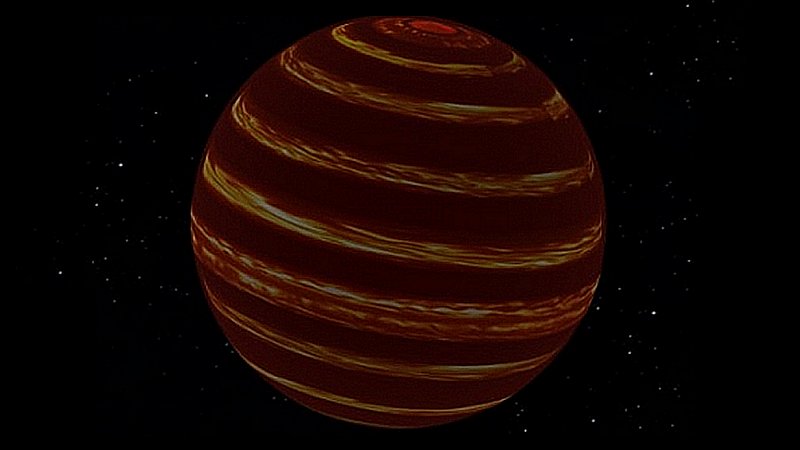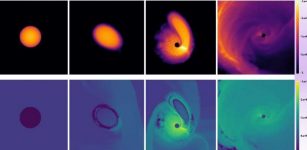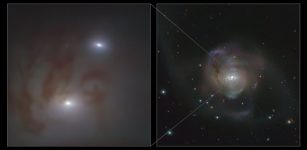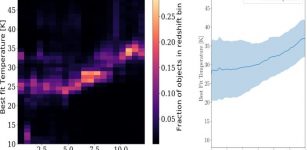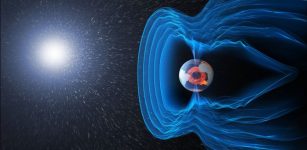Jet Streams And Winds Observed By Astronomers On The Closest Brown Dwarf
Eddie Gonzales Jr. – MessageToEagle.com – Bands and stripes on the brown dwarf closest to Earth have been discovered by a University of Arizona-led research team.
Brown dwarfs are mysterious celestial objects that are not quite stars and not quite planets. They are about the size of Jupiter but typically dozens of times more massive. Still, they are less massive than the smallest stars, so their cores do not have enough pressure to fuse atoms the way stars do.
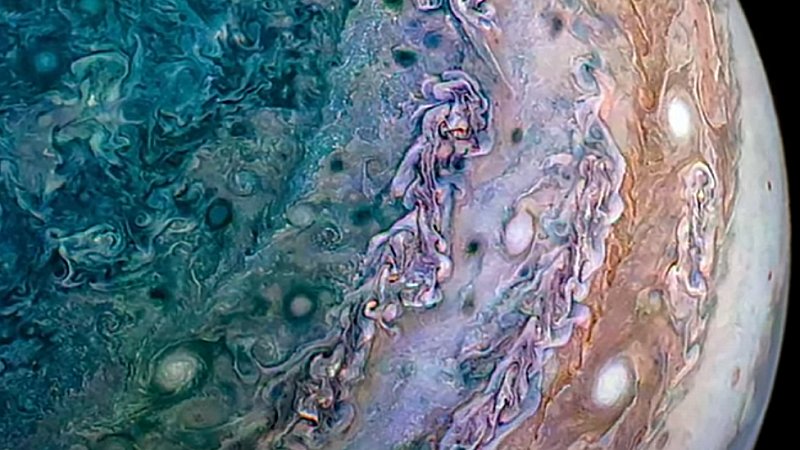 Closer to its pole, the cloud patterns are set by local storms.
Closer to its pole, the cloud patterns are set by local storms.
They are hot when they form and gradually cool, glowing faintly and dimming slowly throughout their lives, making them hard to find. No telescope can clearly see the atmospheres of these objects.
“We wondered, do brown dwarfs look like Jupiter, with its regular belts and bands shaped by large, parallel, longitudinal jets, or will they be dominated by an ever-changing pattern of gigantic storms known as vortices like those found on Jupiter’s poles?” said UArizona researcher Daniel Apai, an associate professor in the Department of Astronomy and Steward Observatory and the Lunar and Planetary Laboratory.
Using a novel technique, Apai and his team found that brown dwarfs look strikingly similar to Jupiter. The patterns in the atmospheres reveal high-speed winds running parallel to the brown drawfs’ equators.
“Wind patterns and large-scale atmospheric circulation often have profound effects on planetary atmospheres, from Earth’s climate to Jupiter’s appearance, and now we know that such large-scale atmospheric jets also shape brown dwarf atmospheres,” said Apai.
“Knowing how the winds blow and redistribute heat in one of the best-studied and closest brown dwarfs helps us to understand the climates, temperature extremes and evolution of brown dwarfs in general.”
The team used NASA’s Transiting Exoplanet Survey Satellite, or TESS, space telescope to study the two brown dwarfs closest to Earth.
At only 6 1/2 light-years away, the brown dwarfs are called Luhman 16 A and B. While both are about the same size as Jupiter, they are both more dense and therefore contain more mass. Luhman 16 A is about 34 times more massive than Jupiter, and Luhman 16 B — which was the main subject of Apai’s study — is about 28 times more massive than Jupiter and about 1,500 degrees Fahrenheit hotter.
Since the space telescope provides extremely precise measurements and it is not interrupted by daylight, the team collected more rotations than ever before, providing the most detailed view of a brown dwarf’s atmospheric circulation.
“No telescope is large enough to provide detailed images of planets or brown dwarfs,” Apai said. “But by measuring how the brightness of these rotating objects changes over time, it is possible to create crude maps of their atmospheres — a technique that, in the future, could also be used to map Earthlike planets in other solar systems that might otherwise be hard to see.”
Written by Eddie Gonzales Jr. – MessageToEagle.com Staff

